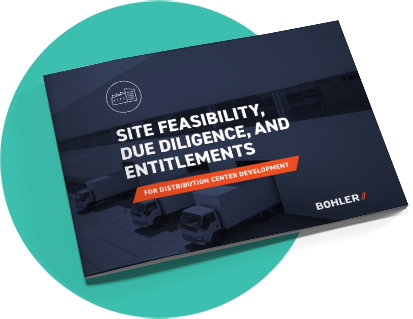Stay in the Know
Get our insights and latest news straight to your inbox.
While it may be tempting to cut corners (and costs) in due diligence, an incomplete understanding of the project could impact your ability to keep it on schedule and within budget as the project progresses.
Whether faced with time constraints due to lease obligations or simply managing a tight budget, an expedited due diligence period may seem like the only option. If you are evaluating an undeveloped site or assessing a potential redevelopment, here are six key items that should remain on your checklist to minimize unexpected costs and delays.
Depending on your project scope, some form of a geotechnical investigation makes sense. Prior to design, it’s important to find out if soil constraints pose risks or design issues. Geotechnical due diligence will disclose information about the physical properties of the underlying soil including rock, historic fill, unsuitable organic layers, seasonal groundwater, and/or buried debris.
Environmental due diligence will provide information about existing site challenges including wetlands, floodplains, brownfields, archeological factors, and endangered species. These investigations will help determine the design and estimated cost associated with mitigation, remediation, structural foundation, suitability of existing soils, and the design pavement section for structures to be built.
Consider reviewing a title search and public records early on, well before the property closing is in sight. This review can bring awareness to potential easements, restrictions, and other encumbrances, which can significantly impact your vision for the project.
The ALTA survey, a package that includes review of public records, is one tool you can use to access critical information about your site’s value, restrictions, and development potential, early in the development process, when you have time to act. This data will help you make more informed decisions about a project’s feasibility, how much time and money it will take to develop, and ultimately whether to make a deal.

As one of the costliest elements of a project, earthwork can be the most significant variable or risk to a development’s return on investment; passing on a conceptual grading plan could be an expensive mistake.
An undeveloped site will often require some earthwork cut and fill to become leveled, and costs to import or export soils are often overlooked at the early project stages. A conceptual grading plan will provide an estimate of the amount of earthwork that will be required, and in turn, provide you with a better understanding of projected costs.
At this stage, conceptual grading also gives your design team an opportunity to strategize earthwork and identify ways to work with particularly hilly topography to minimize the cost.
Preliminary determination of the proposed utility demand and its impact on the surrounding infrastructure during due diligence positions your site civil engineering consultant to better anticipate the need for costly and time-consuming utility extensions and/or major infrastructure upgrades.
Preliminary determination of the proposed utility load provides the project team with a more accurate understanding of the permitting that will be required. Having this information, a qualified design professional can outline major connections and impact fees before starting design, allowing you to budget properly.
Traffic issues and objections are often the largest obstacles to a smooth approval process and can create the most significant post-construction liability. Engaging a traffic engineer during due diligence helps provide benchmarks for proper design of both the site and adjacent roadways, as well as assisting the project team in establishing a general plan for the anticipated permitting path as it relates to the project’s entitlement schedule.
Get ahead of the game by meeting with the appropriate jurisdictional agencies during due diligence. Their feedback on the proposed development will provide you and your design consultants with the opportunity to consider and implement any changes or design requirements prior to formal submissions and public hearings. Post-design changes are costly – having this valuable feedback upfront is a proactive way of keeping your budget and schedule in check.
Questions about due diligence checklists, process, and timelines? Contact one of Bohler’s land development specialists today.
Get our insights and latest news straight to your inbox.